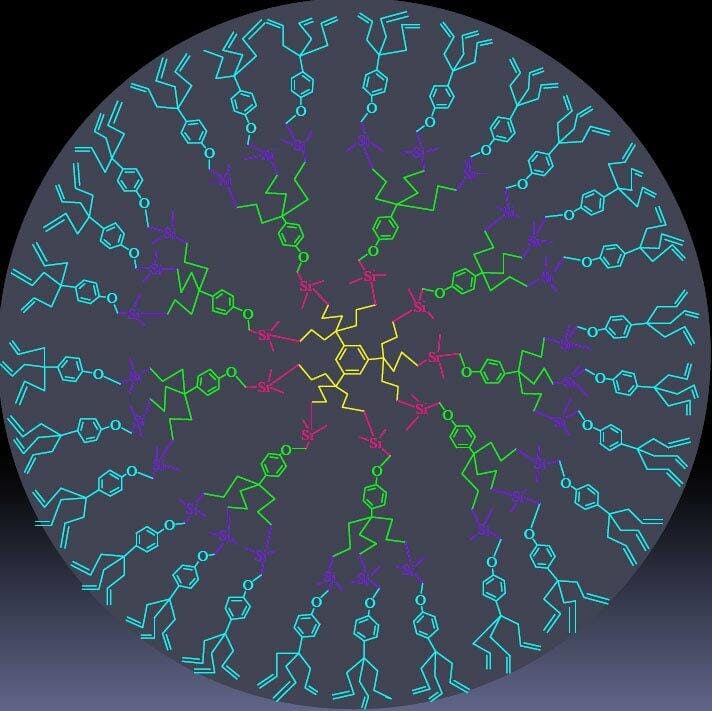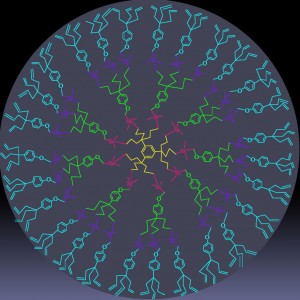Dendrimer Nanoparticles Successfully Deliver RNA Drug to Cancerous Liver


Dendrimer. Credit: Jaruar26 [CC BY-SA 3.0 (http://creativecommons.org/licenses/by-sa/3.0) or GFDL (http://www.gnu.org/copyleft/fdl.html)], via Wikimedia Commons.
Liver cancer is the second leading cause of cancer death in the world. Recently, five small-molecule drugs to treat late stages of hepatocellular carcinoma (HCC) failed in phase III clinical trials due to the amplified drug toxicity in dysfunctional livers. Micro-RNAs (miRNAs) are a hopeful alternative to treat cancer, but a non-toxic carrier is needed to deliver RNAs into the cancer cells without amplification of harmful effects.
More than 1500 spherical molecules synthesized and tested
The researchers at UTSW synthesized more than 1500 artificial nanoparticles to find a compound that would work well as an RNA carrier to cancerous hepatocytes. The nanoparticles were based on dendrimers, repetitively branched molecules that adopt a spherical morphology. Dendrimers of different sizes and physical properties and with different chemical groups were tested in mice affected by an aggressive form of liver cancer. The miRNAs were inserted into the dendrimers and delivered to late-stage liver tumors. The researchers identified a lead dendrimer that caused low toxicity, inhibited tumor growth and extended the lifespan of affected mice.
The combination of miRNAs -small RNAs that naturally function as tumor suppressors- and dendrimers -nanoparticles that deliver the RNAs without causing toxicity- are an exciting new avenue for drug development.
Source: UTSW
